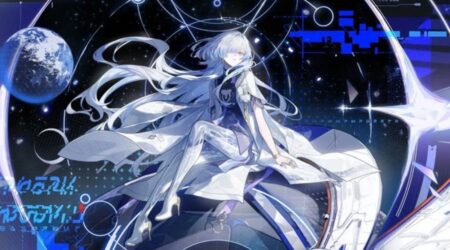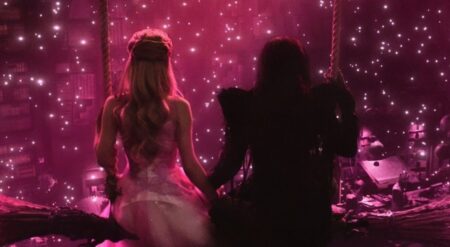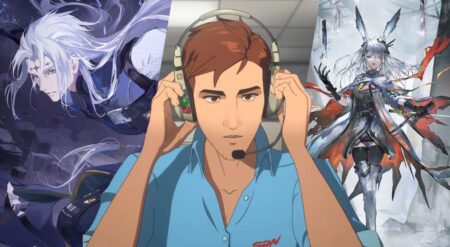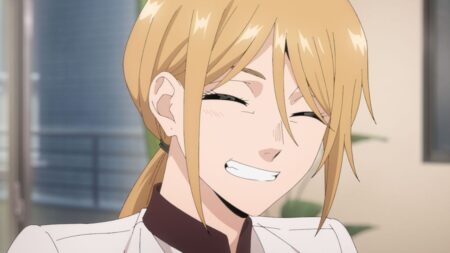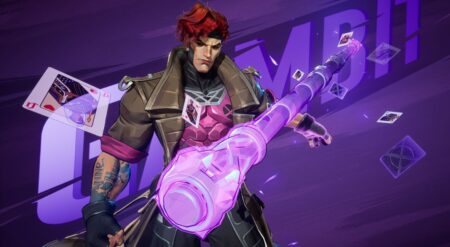In my initial impressions of Prince of Persia: The Lost Crown, I noted how clear it was that the developers took time and effort to utilize real Persian and Iranian history and mythology. Thus, they made a fantasy in which Persian and other Indo-Iranian peoples (such as my people, the Kurds) could find meaningful representation. In this, The Lost Crown joins Assassin’s Creed: Mirage as likely the best SWANA representation ever in video games, not portraying Arabs and Persians as Orientalist caricatures but as fleshed characters rooted in the cultures they inhabit. As I’ve progressed further in Prince of Persia: The Lost Crown while playing in the game’s impressive Farsi (Persian) dub, I’m increasingly impressed with the amount of detail and ingenuity the developers have implemented in this effort to create this Persian-informed fantasy game.
Unlike Mirage, The Lost Crown is a historical fantasy, taking place in an Ancient Persian Empire, seemingly pre-Zoroastrian, but with heavy influence and direct nods to Zoroastrianism in-game. Yet I say “pre-” as the game includes references to pre-Zoroaster deities, such as Mithra, the god of water in one of the amulets. Zoroastrianism is the first major monotheistic religion, older than even Judaism, worshipping the one God, Ahura Mazda. It’s easy to imagine The Lost Crown takes place around the time that Zoroaster concepts, such as the Holy Fire Atar (called “Athra” in the game) were around before the main founding of the religion, and when the Persians still worshipped polytheistically.
But the game still takes some liberties with Iranian mythology and religion. Kaheva is a new character in the game, a goddess and skilled blacksmith. Any Indo-Iranian person who hears the ancient story will recognize her based on Kaveh (‘Kawe’ in Kurdish), the legendary blacksmith (as recorded in the 10th-century Persian text the Shahnameh) whose rebellion against the evil King Zahak resulted in liberation for his people. In Kurdish mythology, Kawe and his people were the first Kurds who fled Zahak’s persecution, founded their own country in the mountains, and Kawe led his people to defeat the evil king.

For The Lost Crown to gender-bend Kaveh and make her an ancient goddess is an intriguing choice. Kaveh was never one of the deities worshipped in Ancient Iran. But he was an ancient and important figure nonetheless, so perhaps the game implies that Kaheva achieved apotheosis of some sort as a reward for saving her people from Zahak. It’s an interesting departure from usual Iranian mythology, but knowing that the game remains a fantastical remix of Iranian history makes it an inoffensive new take, at least to this player who grew up hearing the story of Kawe.
Kaheva is a bold, strong, and smart character who helps you throughout gameplay, and knowing that her creation is rooted in a hero I’ve known of, from my Kurdish mother regaling me as a child, makes me proud to see her inclusion in the game. While I still hope to see Kawe’s actual story adapted on the screen in some way, I hope Kaheva will inspire players to seek out the story of her namesake.
“Atar” is the literal fire that Zoroastrian priests and practitioners use to contemplate Ahura Mazda’s will and find enlightenment through prayer. Zoroastrians are not “fire worshippers,” as others misunderstand, but they recognize Atar as being the life force gifted from Ahura Mazda so that they may carry out His will. In The Lost Crown, Atar (as “Athra”) gives protagonist Sargon access to special abilities as he fights his enemies. But it doesn’t feel like a gimmick, as, again, the game explains in detail what Athra is and how it functions as the lifeblood for all living things. It’s a function of the real Persian world that Sargon inhabits.
One ancient being deeply venerated in Iranian mythology is the Simurgh, a mystical bird said to be a wise guardian of the people. From ancient times to today, the bird is an eternal symbol of Persian and Iranian identity. The Simurgh looms large in The Lost Crown as another deity of sorts, with several of your powers and abilities coming from the bird’s very feathers.
On one of the mountains, you can see giant wings in the background, presumably of the Simurgh themself. Like Athra, using the Simurgh as a game mechanic, along with the game explaining the importance of the guardian bird, informs players on this ancient symbol of Iranian identity rather than just using it as a gimmick.
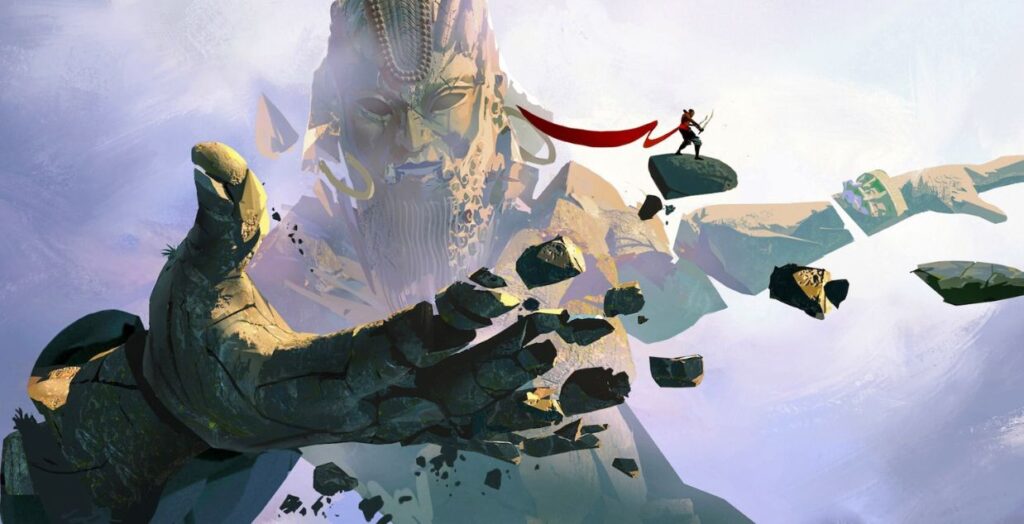
Some may understandably wish for a more precise depiction of Ancient Iranian religion and mythology, like perhaps in portraying actual Zoroastrian and pre-Zoroastrian religious rites. Still, The Lost Crown remains an important step. For both within the Prince of Persia franchise and in general, to have these figures and concepts forwarded to worldwide audiences to learn about our cultures and gain intrigue about what ancient Iran and other areas (like Kurdistan) were like. Hopefully, as they do so, they’ll clamor for more stories about Indo-Iranian mythologies, as we seemingly eternally do for Greek mythology.
Besides the mythology and religion invoked, the game’s background is also pivotal to the game’s articulated Persian culture. The developers based the architecture, statues, and art on those of the Achaemenid Empire (c.500s-300s BCE), among other ancient Iranian civilizations. To see statues and depictions of ancient Persian men with their trademark large beards and trademark stoic stances, represented in such splendor in the temples we traverse, was a majesty to play through as the visual representation alone signifies the glory of Ancient Iranian civilization.
It was a majesty to play through the backdrop of the fabled Mount Qaf, along with the Caucasus Mountains in which it was based, not to mention the actual Hyrcanian Forests of Iran that border the mountains and the valleys between the various mountains of Iran. When films and TV shows with an Orientalist lens of Iran and other countries in the SWANA region would stereotypically portray them as yellow-filtered and dangerous desert environments. Prince of Persia: The Lost Crown shows the beautiful diversity of Iranian topography instead.
I felt as if I really were in Iran playing against this backdrop, even though I have never had the fortune to visit. Yet I have been fortunate to visit Kurdistan of Iraq many times in my life. I can say the game echoed the majesty of our landscape as well.
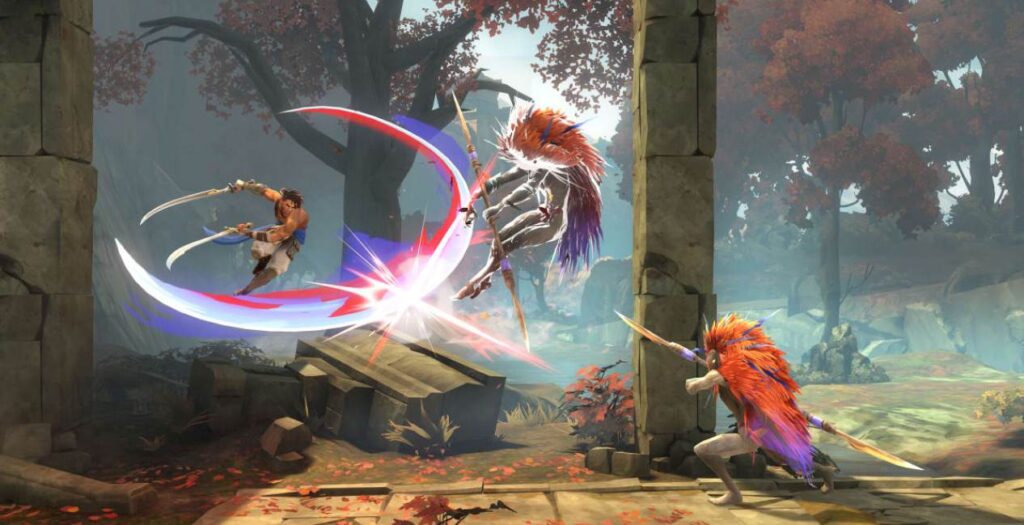
To play Prince of Persia: The Lost Crown in Farsi is a gift. It shouldn’t feel as such. It should be the norm along with Arabic, Kurdish, Turkish, Armenian, Azeri, Tamazight, and other SWANA languages Western media typically leaves behind in providing linguistic accessibility. The case of Farsi has been especially scant, as the damage of US sanctions on Iran has extended to diaspora Iranians in the West, unable to access media made here in their language, much less in video games. Thus, Prince of Persia: The Lost Crown‘s Farsi dub is a game-changer for others to follow.
While I myself know only a little Farsi and use English subtitles, I speak a good amount of Kurdish, another Indo-Iranian language related to Farsi. Playing in Farsi has been a genuine learning experience. I can understand certain words and build a context of the conversations Sargon has with other characters in the game. I rejoice hearing certain Persian names pronounced correctly, such as “Dariush”, too often anglicized as “Darius.” While the Farsi spoken at the time of Prince of Persia: The Lost Crown would likely be different with fewer Arabic words, it is still a classical style of Farsi spoken that immerses players in classical Iran. To hear it is mesmeric.
The soundtrack, composed by Iranian artist Mentrix and Gareth Coker, constantly evokes classical Iranian music. Using the tanbur, daf, oud, and other classical instruments, they created a culturally resonant gaming experience. This creates the atmosphere which, combined with the various cultural elements discussed, completes the riveting Persian fantasy.
With more depictions like these, gaming can start moving away from the barbaric and simplistic Orientalist depictions of the SWANA region the gaming industry too often gives us. We move on to celebrating the richness, successes, complexities, and of our lands, cultures, mythologies, histories, and peoples. Prince of Persia: The Lost Crown is one of many Iranian stories to tell in video games, and hopefully, its success propels the industry to tell many more. In the meantime, it is a magnificent Persian story to play.
Prince of Persia: The Lost Crown is available now in English and Farsi on Nintendo Switch, PlayStation 5, Xbox Series X|S, and PC.



